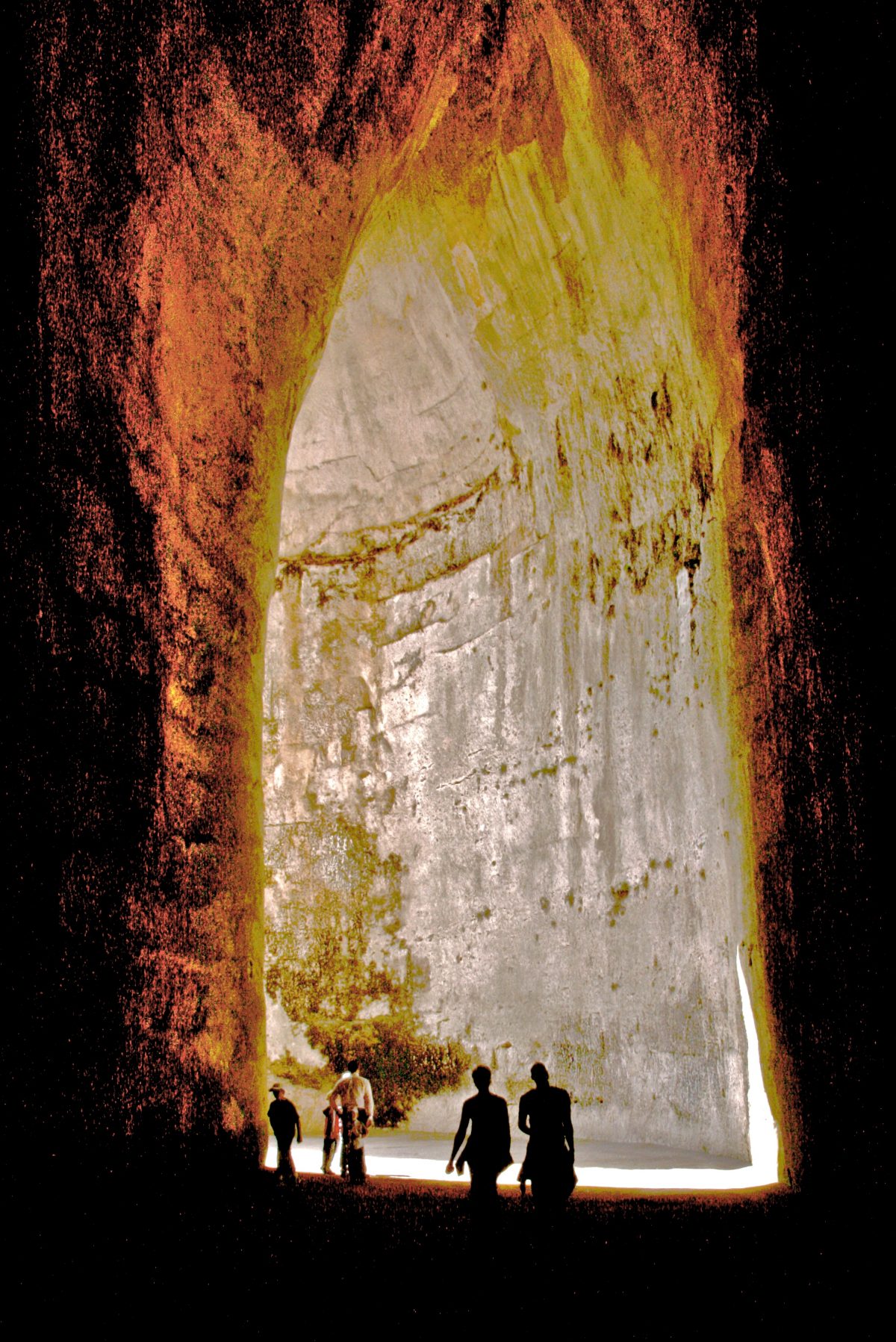This large limestone cave has a great sound legend attached to it. The story goes that the tyrant Dionysius (ca. 432–367 BC) used this place as a prison. The wedge shape of the cavern caused peoples’ conversations to be focussed and amplified at the roof of the cave, 22m above the floor. Supposedly this enabled guards to spy on prisoners by listening to the amplified sound through a small hidden opening at the top of the cave: even when the prisoners spoke in whispers.
“The tearing of a piece of paper makes a noise not unlike that occasioned by knocking a heavy stick against a stone” Conrad Malte-Brun, 1829.
Unfortunately, it’s no longer possible to hear the effect because of safety fears; in the past travellers were hosted up by rope and pulley to the opening. Consequently, a modern listener is just left to enjoy the reverberance at ground level, marvel at the legend and take in the cavern’s ear-like shape.
Gino Iannace and collaborators [1] have made measurements and test whether the spying myth is true. Rather disappointing, they found that any whispered conversations were unintelligible and lost in a blur of reverberation. The sound sample at the top of the page was reconstructed from their measurements. Even with carefully enunciated speech, it is hard to understand what is being said.
This video has good sound, but for some reason has been shot on its side.
Logistics
The Parco Archeologico della Neapolis, which includes the cavern, also has a Greek amphitheatre which sound tourists can admire.
Credits
- Site suggested by Nick Antonio
- [1] G. Iannace, L. Marletta, F. Sicurella and E. Ianniello, “Acoustic measurements in the Ear of Dionysius at Syracuse (Italy)” Internoise 2010.
- Photo: Michael Wilson (c) some rights reserved



Hi , I find the prisoner idea preposterous , I visited the cave , and spent a while singing there, its amazing, the ancients went to a lot of trouble reworking the stone , to perfect it , the fact of greek theatre at very close proximity gives a clue , my personal hypothesis is that it was used for ancient theatrical special sonic effects , the voices of the gods seeming to come from nowhere , just a personal idea
Mary
Quite an impressive effect ! If possible, try to come in at a quiet time of the day/year, so that you can experiment by yourself without lots of people shouting or singing around you.
The Greek theatre is great too, although the rear wall has disappeared, and its acoustical afficiency altogether.